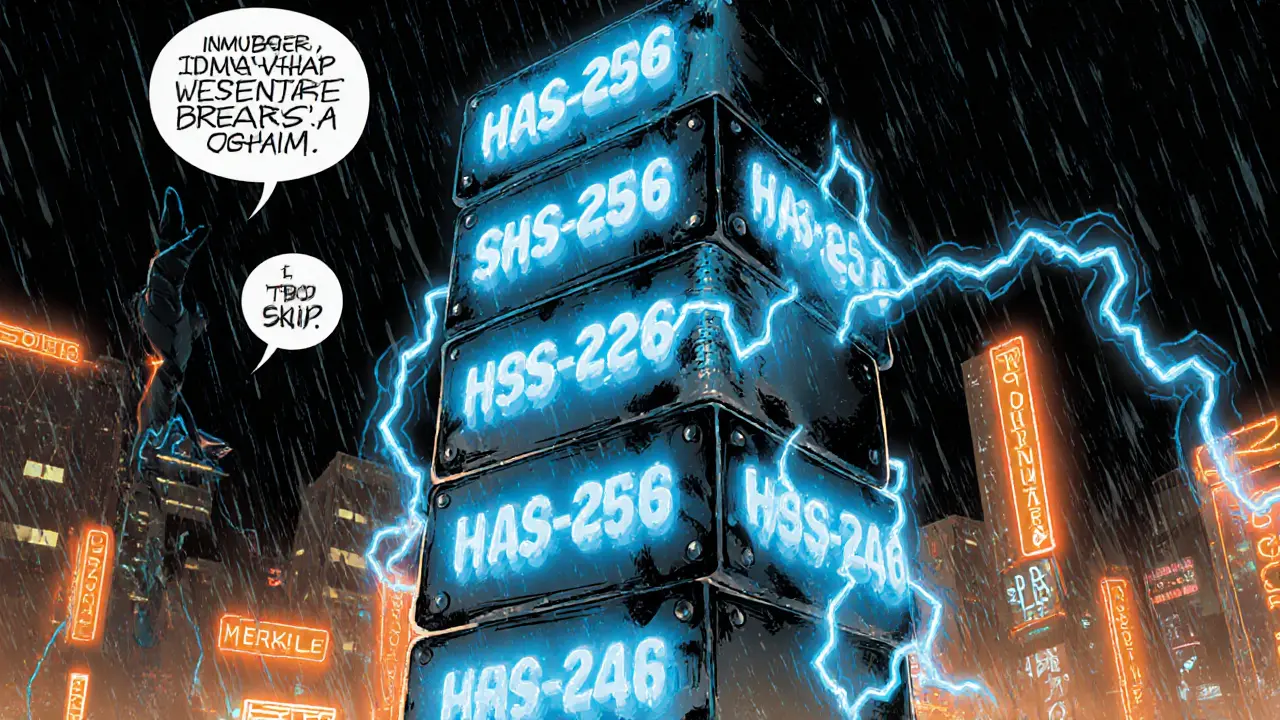Cryptographic Hashing
When working with cryptographic hashing, the process of turning any input into a fixed‑size, seemingly random string that cannot be reversed. Also known as hashing algorithm, it is the backbone of data integrity across modern systems. A hash function, such as SHA‑256 or Keccak‑256, takes arbitrary data and produces a deterministic output is the core building block of cryptographic hashing. In a Merkle tree, multiple hashes are combined hierarchically so that a single root hash can verify any piece of a large dataset, the same principle lets you audit massive blockchains with just a few bytes. A digital signature, uses a private key to sign the hash of a message, proving the message’s authenticity without exposing the key also relies on this one‑way transformation. Understanding cryptographic hashing is essential because it powers everything from password storage to distributed ledgers.
Why It Matters in Crypto and Beyond
Cryptographic hashing requires three security properties: pre‑image resistance (you can’t guess the original input), second‑pre‑image resistance (you can’t find another input with the same hash), and collision resistance (finding any two inputs that share a hash is computationally infeasible). These properties enable proof‑of‑work systems where miners repeatedly hash block headers until a hash meets a target difficulty; the difficulty adjustment itself is a direct consequence of hash function design. Merkle trees, which depend on cryptographic hashing, allow lightweight clients to verify transactions without downloading the entire chain, a key advantage for mobile wallets. Digital signatures use hash functions to sign short digests instead of full messages, making signing fast and secure. Outside crypto, hash functions protect file integrity, enable cache validation, and support data deduplication in cloud storage.
When implementing cryptographic hashing, pick algorithms that are widely vetted and not deprecated—SHA‑256, SHA‑3, and BLAKE2 are solid choices today. Avoid outdated hashes like MD5 or SHA‑1, which have known collisions and can undermine security. Combine hashing with salts for password storage to thwart rainbow‑table attacks, and always verify that your blockchain’s consensus layer enforces the expected hash difficulty. The posts below dive into real‑world examples, from exchange security reviews to airdrop safety tips, all of which hinge on the trustworthiness of hash functions. Explore the collection to see how cryptographic hashing shapes crypto security, influences exchange design, and guides best practices for developers and traders alike.
Explore how immutable blockchain records boost data integrity, trust, and compliance across finance, healthcare, and supply chains while revealing the tech behind their security.

